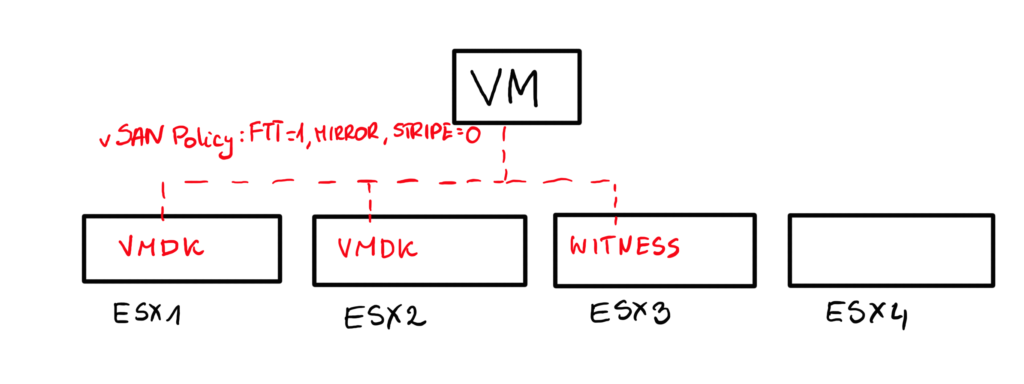Usually when we use a basic SPBM FTT-1 mirror policy and there is no stripe involved, we end up with 2 copies of the data on 2 different hosts and additionally a component metadata on a third one per each object to avoid a split brain scenario.
Like in this example below – two VMDKs on ESX1 and ESX2 and witness metadata on ESX3. For other objects placement will be probably different.

But this is not always the case. When objects are striped, witness metadata may not be needed. Here is an example of FTT-1, stripe=3 policy. One of VMDK objects is striped into RAID-0 on ESX1 and ESX4 (on 3 different disks ) and RAID-0 on ESX3 (on 3 different disks).

Here is how it looks like from the vote perspective: on ESX3 all three components have V=1, component on ESX4 has V=3 and components on ESX1 have V=1 and V=2.

In this case there is no witness metadata component required because this component distribution and votes prevent split brain scenario.

By the way, the component placement is done by vSAN automatically, we do not have to worry about votes and metadata components. But still, it is good to know how it works.
